An Irish Island Gets a Most Meaningful Installation
Travis Price III, architect, author, teacher, philosopher and environmental pioneer, has been practicing for more than three decades to "shape an international architecture informed by ecology and mythology that restores the spirit of place to modern design," he says.
His firm, Travis Price Architects, has designed numerous houses and other projects in and beyond its home base of Washington, D.C. — an unlikely place for Price's ambitions, but one that has enabled him to direct the graduate-level Cultures and Sacred Space concentration and studios at The Catholic University of America's School of Architecture and Planning.
The Spirit of Place design-build studios at The Catholic University have resulted in a number of installations built around the world, from California and British Columbia to Peru, Nepal and Ireland. The latter is the site of many since 2002, including the latest piece — "The Tale of the Tongs" on the island of Inishturk in County Mayo, Ireland. This ideabook looks at how the architect and his students from The Catholic University, alongside local architecture students and stonemasons, have instilled meaning in the place.
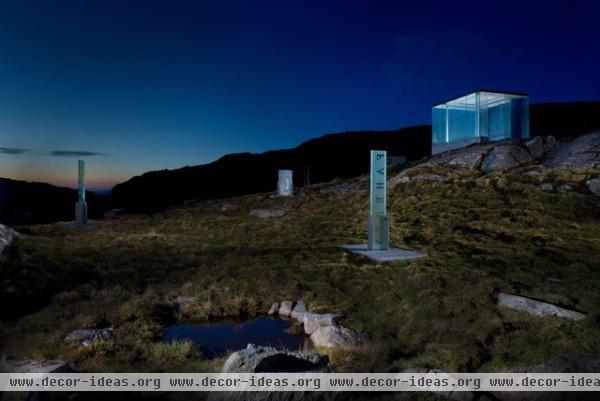
As Price describes in The Mythic Modern: Architectural Expeditions Into the Spirit of Place, the design-build studios' focus is on "design integrating nature and the manmade, an inseparable exploration of mind making matter and matter making mind, always informed by metaphors that have never lost their magical weave." The studios respond to Price's assertion that "the poetics of our cultural heritage are confronting a looming loss" due to the "flow of cultural homogenization creeping rapidly across the built world."
"The Tale of the Tongs" was built as part of The Gathering Ireland 2013, a yearlong celebration in which the country invites people from all corners of the world for gatherings in various villages, towns and cities. Many of these visitors once lived in Ireland, so the idea of the diaspora is an important one. But "The Tale of the Tongs" also recognizes the importance of the island as a place of cultural gatherings, particularly music sessions.
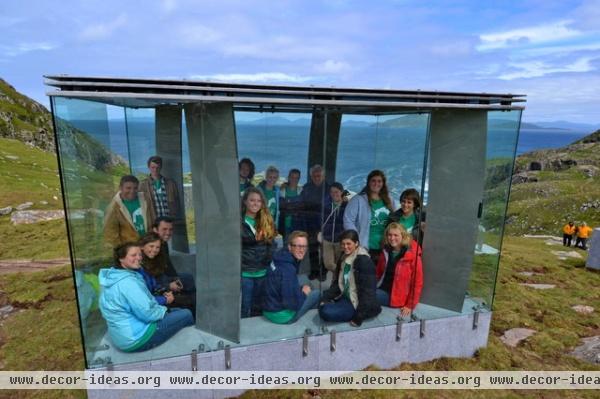
The studio constructed this "legacy marker" primarily from local materials, using traditional methods, and designed it to evoke historical gatherings on the island, furthering envisioning it as a shrine, a respite, an interpretation center and a viewing point. The studio refers to it as a locus, a spiritual and cultural center where the global Irish diaspora can converge.
While Price and his students craft designs that are devoid of the functions we normally associate with architecture — working, sleeping, eating, learning etc. — the projects serve a deeper purpose, and by tapping into distant cultures and myths, they can offer the rest of us lessons on how to instill the poetic into the everyday, particularly when it comes to our homes and relationship with nature.
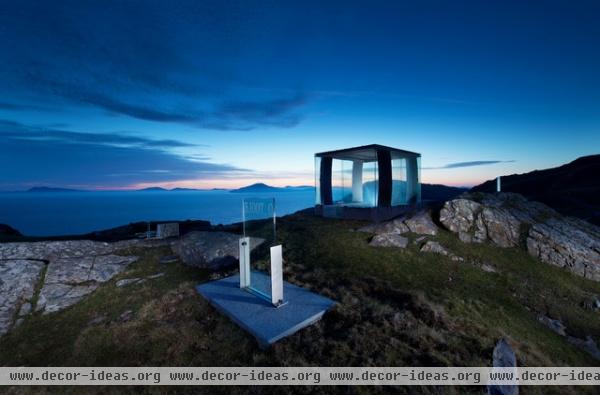
The marker sits atop the island's rocky terrain, standing out from it like a glass beacon that calls toward the ocean, the surrounding islands and the Irish mainland about 10 miles in the distance. It is composed of a semienclosed room with glass walls, various pylons etched with the names of local families and stone blocks (some that serve as benches, others taller than a person) that mark lines of direction in the landscape.
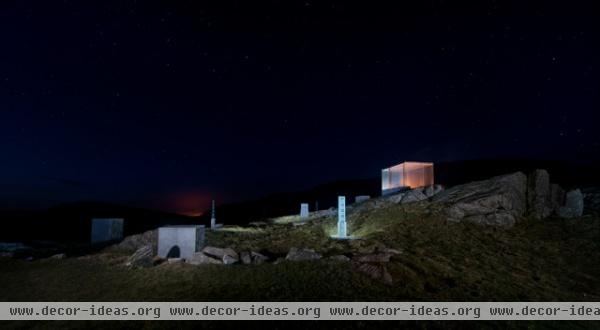
Price first came to Mayo in 1999 and fell in love; he's devoted six studios to the county since. With "The Tale of the Tongs," the team focused on "finding a deep story to tell, creating a poetic place for people to regather themselves," he says.
Studio professor Kathleen Lane says the students "spent a semester studying place, climate, ecology, history, literature, poems — stories of the place and of people who stayed and left." The scattering of objects about the landscape starts to get at the ideas within the legacy marker.
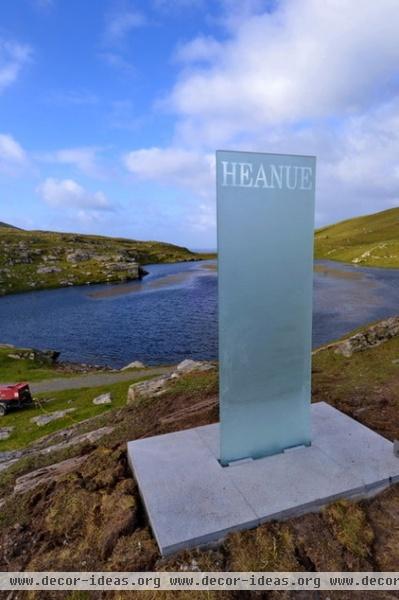
Perhaps the most literal markers of meaning are the glass pylons etched with the island's six family names: Heanue, Heaney, O’Toole, Concannon, Faherty and Prendergast.
The orientation of the pylons also starts to define vistas across the landscape; Heanue, for example, looks toward the bay in a particular manner, highlighting it in a way we might not otherwise have thought of.
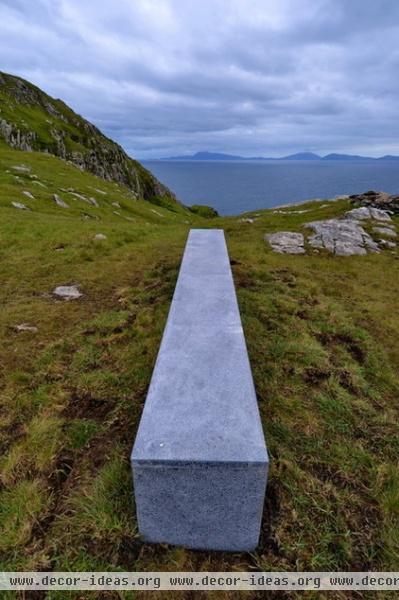
The stone blocks also define views, but in a more overt manner. This low and long block points to a distant shore, amplifying it with meaning by making it the terminus of an imaginary axis.
What is the significance of that distant place? Is there a connection between there and here? These and other questions come to mind with such a landscape feature.
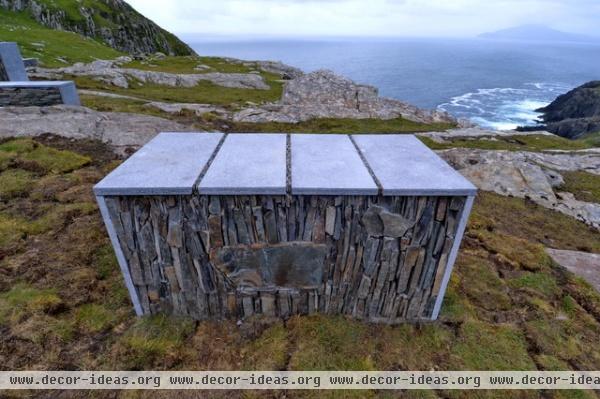
The blocks also exude meaning through their construction. The dry stones are placed on their sides and seemingly sandwiched between the outer smooth stones. It's as if the rough terrain is compressed into a compact block that sets itself off from the ground through its orthogonal lines.
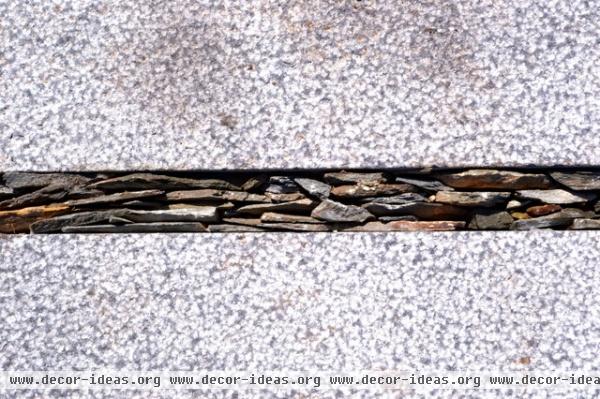
The gaps atop the blocks are especially beautiful, filled with small pieces of stone parallel to the gap and stones below.
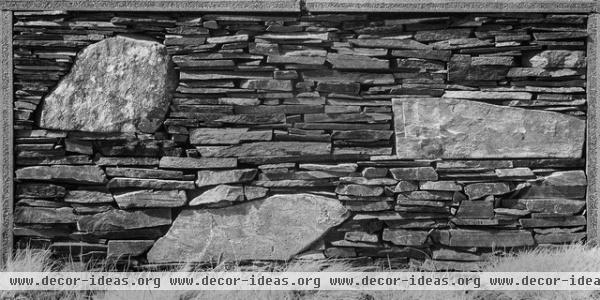
Some blocks were made by stacking the stones in a more traditional manner, recalling the nearby 19th-century Signal Tower, now a ruin. The dry stacking of the flat pieces "holds" the larger rocks in a manner that elevates their importance, much like the glass enclosure and other pieces of "The Tale of the Tongs" mark a special place on the island.
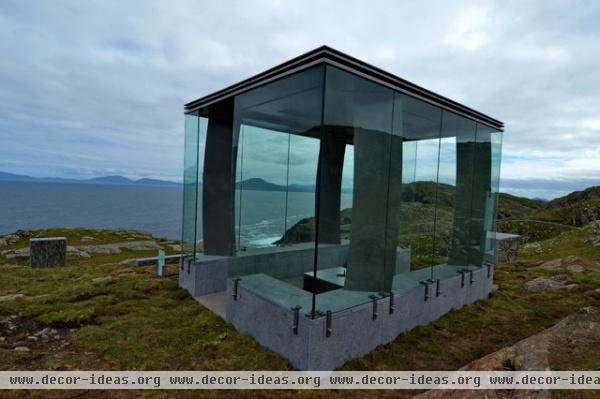
The cubic glass enclosure is the uppermost construction, giving a panoramic of the water and distant shores while offering relief from the winds and rain. Open on two ends for access, the design is simply glass walls clipped to stone benches and the roof, with four curving steel supports angled to give the enclosure some directionality.
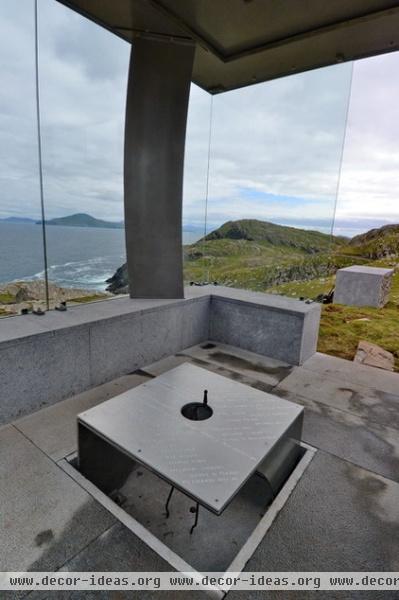
Suitably marking the center of the enclosure is a steel hearth. It is here where the tongs come into play: The legacy marker aims to unite the area's Druidic and Christian traditions — after all, the project is located in the shadow of Croagh Patrick, the ancient pilgrimage route of Saint Patrick.
As people converge on this spot, Price hopes it will be a place to "reconnect and to rekindle Irish heritage: the fires, the hearth, and the 'tongs of reunion,'" he says.

The hearth is marked with the names of the people who made it a reality. This spot is charged with meaning, as it is the coming together of the departed through the shared manipulation of the "home fire" that burns within each of them.
The plate atop the hearth fittingly reads: "whispering flames revealing our breaths held, yearning anew ... rekindled aroma of the tongs echoes our burning embrace in view ..."
Not every home or place is imbued with such a past or such natural beauty, but that's no reason we can't try to instill our little corners of the world with poetry that is meaningful to us. Hopefully this installation offers some inspiration for doing so.












